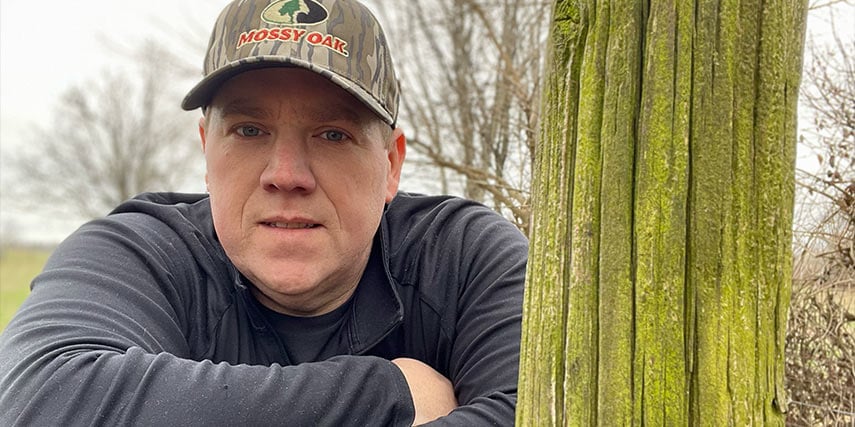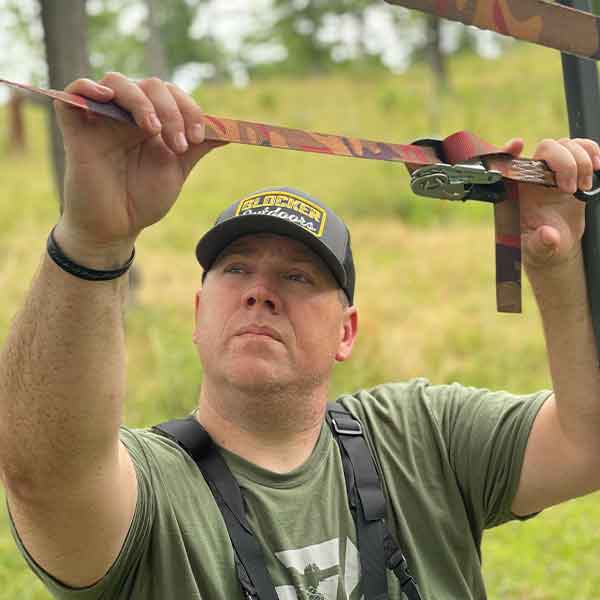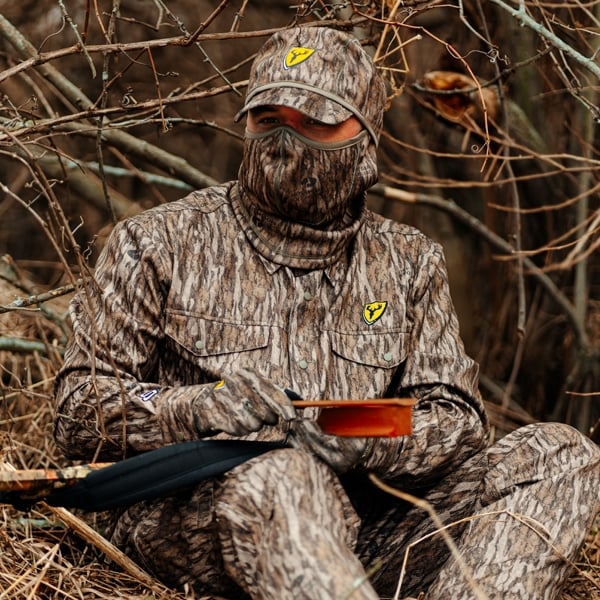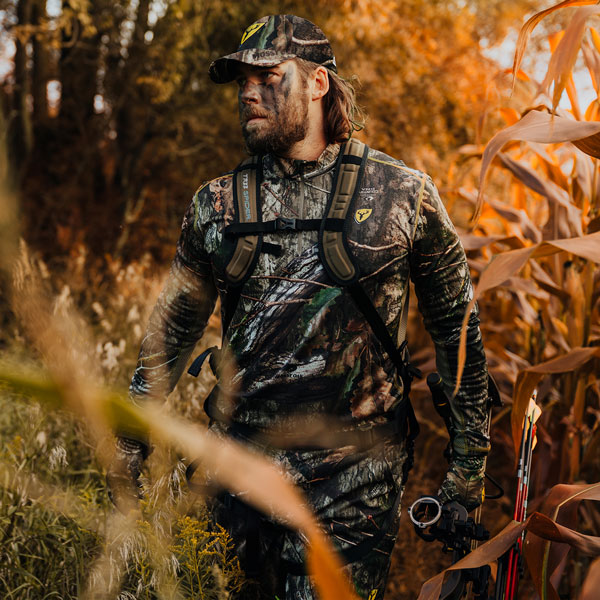At the young age of 20, I found myself sitting at the top of my father's ladder stand. It was the first evening of Missouri's firearms deer season, and the stand had been in the same tree for two seasons. No one had hunted that particular stand since the first part of archery season, and I had high hopes of seeing several deer that evening. As it turned out, however, I encountered only one or two deer over the course of a long sit, and the worst was yet to come.
As darkness fell, I stood up to climb down from the stand. I turned and faced the tree and placed my foot on the first step. I immediately felt the stand loosen away from the tree and rotate to one side. I quickly realized the stand was falling and made another fast step down before jumping away from the tree, falling ten feet and landing on my hands and knees.
I remained on my hands and knees for a couple of minutes until the tingling pain in my knees and wrists began to subside. After regaining my composure and realizing I wasn’t badly hurt, I said a thank you prayer and stood up. I looked up and observed that the top strap anchoring the stand to the tree had failed, causing it to break away. I had gotten to the ground much faster than I intended, but I was grateful to be safe and largely unharmed with only some minor bumps and bruises.
The event was a close call that I’ve never forgotten. I was very fortunate. My parents always preached to me about being safe in my treestands, and the hunter's safety course I completed as a young teenager also stressed the importance of treestand safety. Even so, like many other hunters, I took unnecessary chances. I thought it would never happen to me… until it did.
For new hunters seeking guidance or the veteran hunter who needs a reminder, here are a few key safety tips for hunting from a treestand.
SAFETY HARNESS
The number-one tip for anyone using a treestand – whether it be a climber, hang-on, or ladder-type stand – is always wear a safety harness approved by the TMA (Treestand Manufacturers Association).
When hunters first began wearing safety harnesses years ago, they were uncomfortable and hard to get on. Some early designs even contained a belt around the waist and were found to cause harm and even death in some cases. With these poor, unpopular designs, it’s easy to understand why many hunters were not committed to wearing safety harnesses when hunting. Thankfully, new designs emerged on the scene, and today's safety harnesses support the entire body and come with tension relief if one happens to fall. There are no more excuses.
Today's safety harnesses such as those made by Tree Spider from Blocker Outdoors are comfortable, easy to get on, and – most importantly – will save a life or prevent injury if the hunter were to fall.
Safety harnesses should be worn anytime the feet leave the ground. Hunters should wear them when hunting, hanging treestands, and going up and down in and out of the stand. The good news is that most hunters today wear a safety harness when hunting above the ground. For those of you who do not, you are playing a high-stakes game full of unnecessary risk.
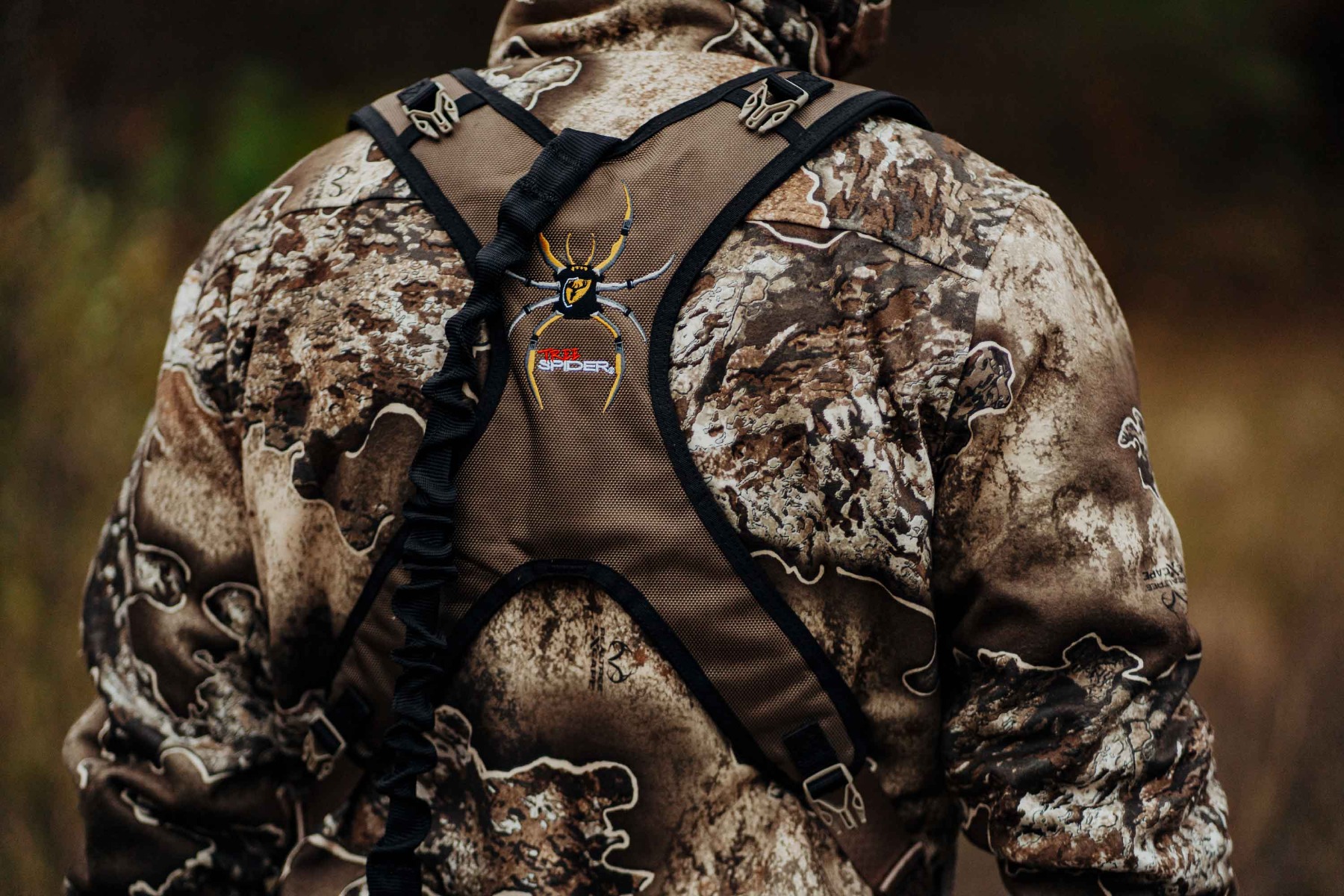
INSPECT EQUIPMENT BEFORE USE
Being safe when using treestands is not limited to wearing a safety harness. Safety must happen prior to, during, and after the hunt. In the case of my fall, I should have checked everything over before hunting that evening. If I had, my accident probably would have been avoided.
Check all straps and parts on your treestand to ensure everything is functioning well and is in good, sturdy condition. I try to make sure everything is in order before hanging a new stand, once again after it is in place, and periodically throughout the hunting season. I often hear of hunters who leave stands up throughout the entire year and even from one season to the next. I admit I'm guilty; I have done it myself but I don't recommend it. If possible, you should take all stands down each year to avoid any damage or weathering of the treestand and its parts that make it function safely as designed. If one does leave stands up each year, it is a must to make sure all straps, chains, and hardware are in sound condition before hunting. Straps are cheap; if you have any concerns whatsoever, simply replace them.
SELECT A PROPER TREE
Another critical factor in assuring a treestand will be safe is assuring the tree itself is strong enough to accommodate the stand and the hunter's weight. On some occasions, hunters will choose a tree that’s too small or too weak, often because it’s not healthy. Either one can cause the stand to slip or fall while in use. Instead, make sure the tree is about as wide as your shoulders and that the tree is visibly healthy.
HANGING STANDS
Many treestand accidents happen when stands are being hung or taken down. Therefore, hunters should wear their safety harnesses when hanging and removing stands, not just while climbing in or out and while hunting from them. Again, safety requires wearing a harness anytime a hunter’s feet are off the ground.
Most stands are hung during the busy time of mid-summer. Personally, I want to have all my stands in place several months before the hunting season begins so I can avoid encroaching on, disturbing, or pressuring deer during the season. It’s always a good idea to have someone with you when hanging new stands, performing stand maintenance, or moving them. Not only does an extra person help with the actual work, but it is also a wise idea for safety.
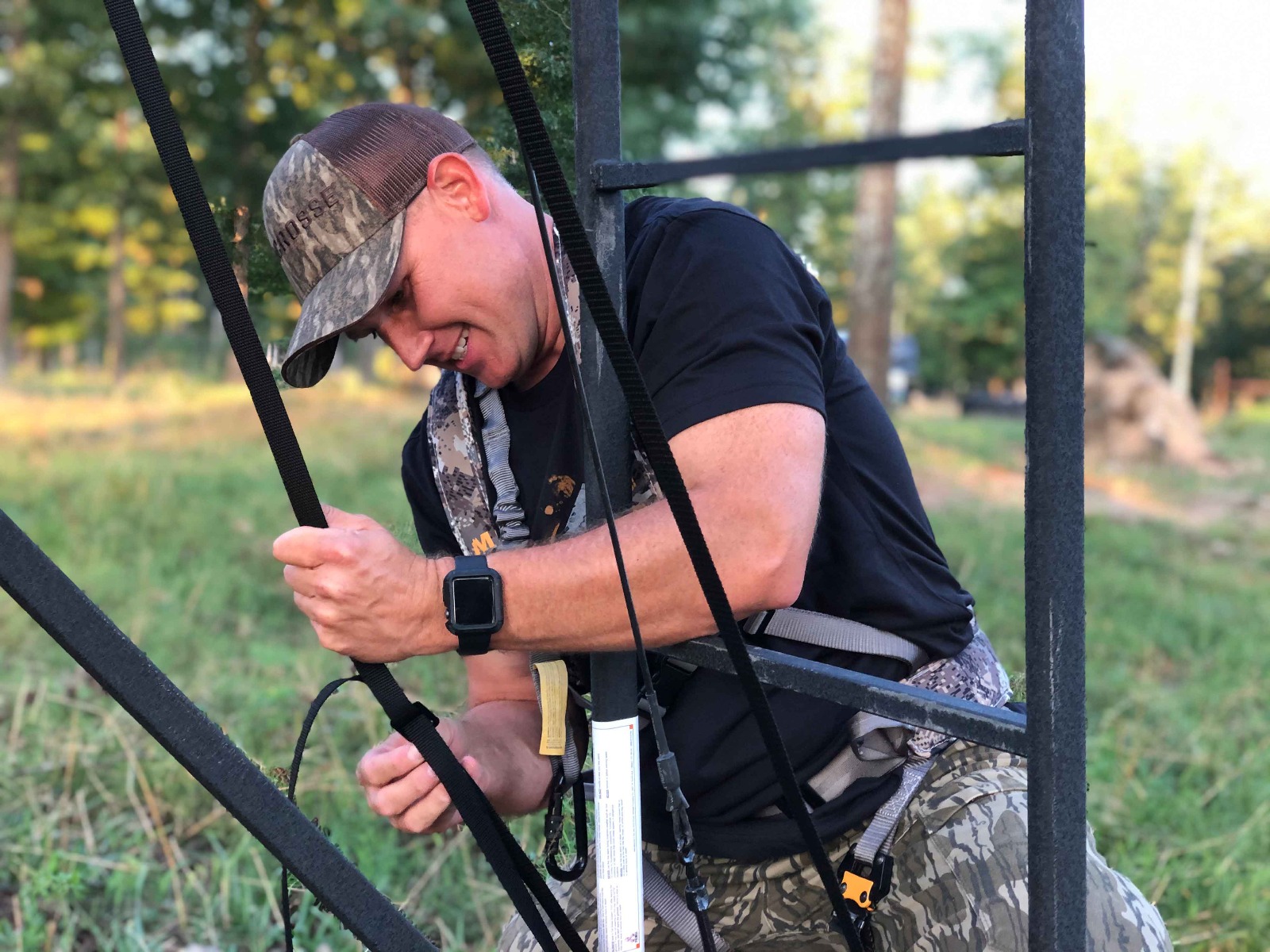
USE A LIFELINE
It is easy to lose balance, slip on wet or frozen steps, or – as in my situation – have an equipment failure when climbing. A lifeline is a rope that attaches to or above your stand and connects to your safety harness. It has a sliding knot or pulley that can slide up or down the rope when the hunter is moving. If a fall occurs, the knot or pulley catches, avoiding a fall. When moving up and down a ladder or climbing with a climber-style stand, it is essential to remember the three points of contact rule. This means at least three of your hands or feet are always in contact with the ladder. The three points of contact rule allow the hunter to have complete control and climb in the safest way possible while minimizing the risk of falling.
USE PULL UP ROPE
Common mistake hunters make when hunting or hanging stands is not using a pull-up rope to bring up or lower down their firearm, bow, or other gear. Instead, they get in a hurry and climb their treestand with their bow or rifle in one hand. This makes keeping three points of contact impossible. Hunters can get their weapons tangled when climbing or lose their balance and not be able to recover. A secondary impact is that they can also damage their firearm or bow. To guarantee no damage or injury, everyone should use a pull-up rope to retrieve items when seated in a stand or lower them back to the ground when they are done. Remember basic firearms safety and make sure all firearms are unloaded before pulling them up or lowering them; don’t rely on the firearm’s safety mechanism. The risk of bumping the safety and hanging a trigger on a limb or part of the stand is real. Always unload the firearm and keep it that way until you are safely harnessed in, seated, and ready to hunt.
CELL PHONE AND EMERGENCY CONTACT
A final tip to help remain safe when hunting or working on stands is to ensure a family member, friend or loved one knows the exact location you will be hunting, when you’ll be there, and when you plan to return. Simply leave a note, a message, or a call so that someone knows when you will be gone and when to expect you back. You can even share your location with them in real-time. Then, carry your cell phone with you – on your person – at all times. If you were to get hurt or need help, assistance is just a phone call away.
As hunters, we often get caught up in the prep work that goes into pursuing a big buck. Yet many of us still overlook the importance of safety during these critical preparations, as well as during the hunt itself. We all want to enjoy our time in the great outdoors, but we also need to make sure that we come home to the people who love us at the end of the hunt. Following these tips anytime your feet will be off the ground will help ensure that happens.
To learn more about our full assortment of Tree Spider Harnesses click here.

